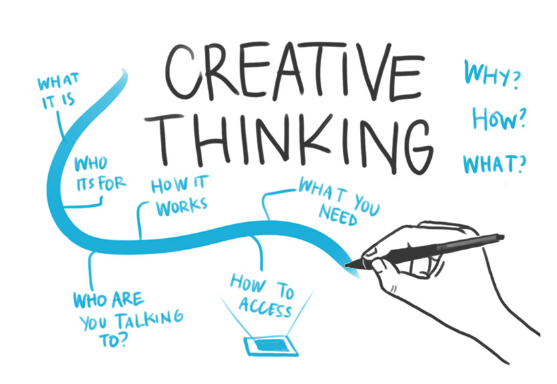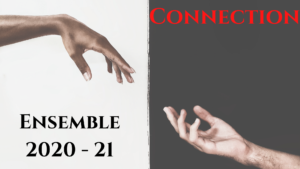Teaching creative thinking is one of the most critical things to be taught today. Employers across the globe are increasingly looking for creative thinkers who can solve complex problems. But what is creative thinking in the first place? And can it be ‘taught’?
Let us start by defining creativity – “thinking out of the box”; “the ability to transcend traditional ways of thinking or acting”; “to develop new and original ideas, methods or objects”; “lateral thinking” are some common definitions.
In a nutshell, It can be defined as looking at something in a new way and offering a solution that is innovative and (maybe) radical in approach.
Creativity, one of the 4 C’s of the 21st Century Skills that is widely spoken about in many forums today, is natural in people but the ability varies from person to person. Though not all people are creative, it can be inculcated and strengthened by practice. The process of creative thinking goes through five stages, represented in the diagram here.
These need to be developed through multiple different activities in the classroom.
Here are five activities we use in our classrooms to allow students to go through these stages to inculcate and nurture creative thinking.
- Reading
Reading is an independent skill that requires a concerted effort, nevertheless when this skill is worked on, it allows creativity to flourish too. Often most of us love reading our favorite genres and topics or read because it is associated with studying and cramming for assessments. Focussed time allocated for reading a variety of texts help students engage with the same. For a change, picking up short articles or blogs on a subject one does not read often or mostly enjoy, will help get out of one’s comfort zone. WIth young children and tweens, prodding them and having a conversation around the topic after they read something will help provide them new insights and thinking.
In very young learners, read-aloud sessions allow the young minds to listen and make meaning of what is being read. With slightly older learners asking them to bring interesting news items and articles to class ensures a variety of topics are brought in. Discussions around these topics then allow students to express themselves freely.
- Visual content
A lot catches one’s eyes and gets into the subconscious mind even if one is not mindful. When children are exposed to more visual content as a practice, it can trigger their sensory imagination. The sound and the visual together create strong thought patterns and ideas. It is important to remember that not all visual content needs to be digital. In today’s circumstances, a variety of other tools and techniques can be used to build this. Walking through the nieghbourhood, print ads, a drive through the city, listening to a song and vividly imagining the scene, playing Pictionary or Dumb-charades all help in creating visual content.
Some of these techniques used In the classrooms by our teachers have ensured that not only learning happens in interesting ways, but also builds students’ creative skills. Again, here a follow up conversation with students helps, especially in young children where it aids in building their vocabulary and narration. Adding ‘what if’ situations further allows vivid imaginations and develops their creative approach.
- Brainstorm
This is fairly an old technique but still a powerful tool to generate creative ideas. Born in the corporate world in the 1940’s, brainstorming has found its ways into several other meetings and is a great tool that teachers use in the classrooms as it allows uninhibited flow of ideas. Creating a safe and non judgemental space allows students to explore and share divergent ideas. It is a great technique that many teachers follow in their classrooms especially to improve student participation and allow student voices to be heard.
- Picture-driven mind mapping
A picture speaks a thousand words. It is said that the human brain can process images up to 60,000 times faster than words. The tradition of using mind-maps with words is replaced by pictures. A central theme or a situation is drawn as a picture and then they are branched with related pictures that depict situations/ possibilities. Words are sparingly used, only to give meaning to the situation depicted in the picture. The pictures can be as colorful as possible to trigger creative and lateral thinking. This will be a wonderful weekend game for the family too. The best part is, it is a digital detox routine.
- Role-plays
Role-plays are very popular exercises in schools that can help trigger creative thinking. The very idea of making students act as someone gives them the opportunity to present themselves in creative ways. Role-plays, apart from opening up creative and lateral thinking in a student can also help in developing their leadership skills and communication skills.
There is no one best way, part of the creative process is to continuously look for opportunities when designing classroom activities to think and do things differently. It is important to remember that creativity is an ability that can be practiced, developed and nurtured.
Here is an oft repeated exercise that is conducted in many settings. Take a paperclip, now list the number of things you can use it for. Ask a youngster to do the same. Compare your lists and see who has the most number of ideas and how different and creative the ideas are.
Hands down you will know who won this challenge!



